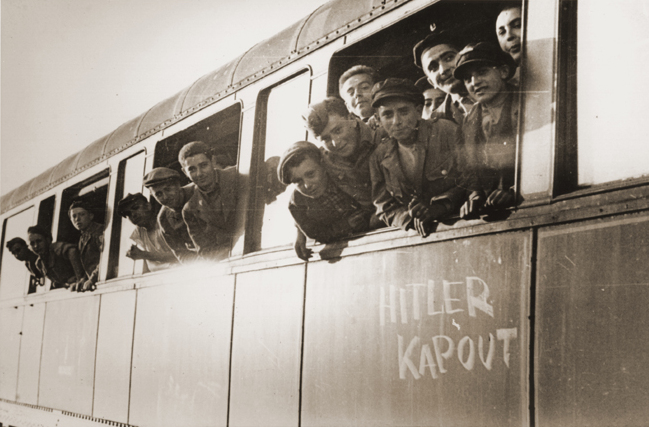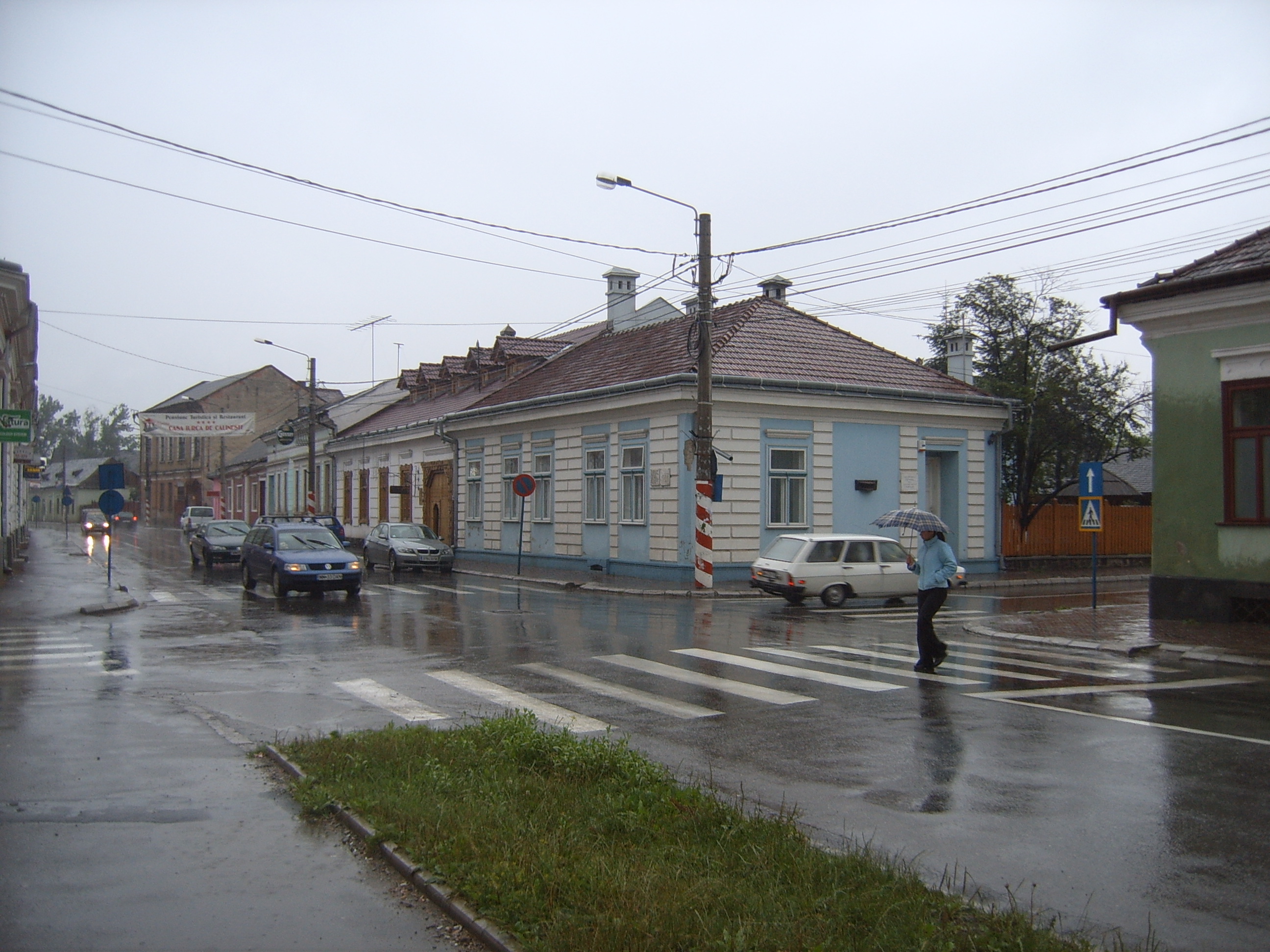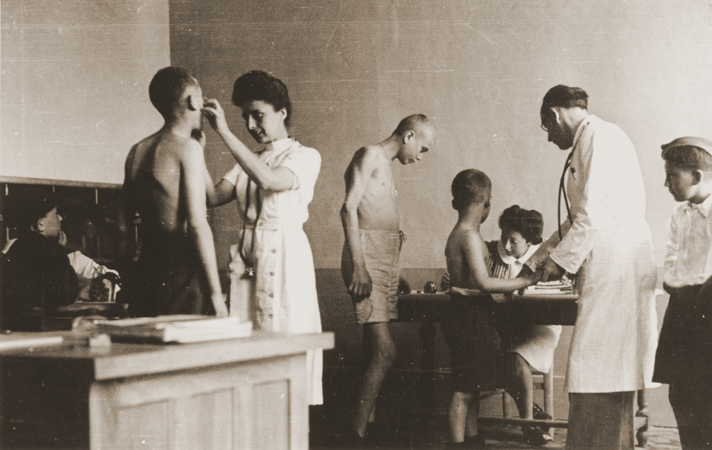|
Robbie Waisman
Romek “Robbie” Waisman (born 1931) is a Polish-Canadian educator and active member of the Holocaust survivor community in Canada. In 1944, he was interned at the Buchenwald concentration camp and forged strong relationships with the other children imprisoned there. After the war, he briefly lived in France, where he studied and came to terms with his new life as a war orphan. In 1949, Waisman emigrated to Canada in search of a new life. Since the 1980s, he has become a vocal advocate for Holocaust awareness, devoting himself to consciousness raising at both the local and national level. He has occupied several executive positions in the Vancouver Holocaust Education Centre, including its presidency. In the years since he began sharing his story, he has spoken to thousands of students about the importance of remembering, and has worked on behalf of the Jewish community to foster solidarity with Canada’s Indigenous communities. Waisman remains a respected voice across Can ... [...More Info...] [...Related Items...] OR: [Wikipedia] [Google] [Baidu] |
Skarżysko-Kamienna
Skarżysko-Kamienna is a city in northern Świętokrzyskie Voivodeship in south-central Poland by Kamienna river, to the north of Świętokrzyskie Mountains; one of the voivodship's major cities. Prior to 1928, it bore the name of ''Kamienna''; in less formal contexts usually only the first part of the name (''Skarżysko'') is used. It belongs to historic Polish province of Lesser Poland. Skarżysko-Kamienna is an important railroad junction, with two main lines (Kraków – Warsaw and Sandomierz – Koluszki) crossing there. History The present-day districts of Łyżwy and Nowy Młyn were the locations of Paleolithic industrial settlements, which are now archaeological sites, part of the Rydno Archaeological Reserve, consisting of several hundred former Paleolithic sites stretching from Skarżysko-Kamienna to Wąchock. The sites were discovered in 1923–1925. In 1173, the knights' congress gathered in Milica village (now the town's district) led by Casimir II The Just. Within ... [...More Info...] [...Related Items...] OR: [Wikipedia] [Google] [Baidu] |
Jewish Ghettos In German-occupied Poland
Ghettos were established by Nazi Germany in hundreds of locations across occupied Poland after the German invasion of Poland.Yitzhak Arad, ''Belzec, Sobibor, Treblinka.'' Indiana University Press, Bloomington and Indianapolis, 1987.''Biuletyn Głównej Komisji Badania Zbrodni Hitlerowskich w Polsce,'' Wydawnictwo Prawnicze, 1960. Most ghettos were established between October 1939 and July 1942 in order to confine and segregate Poland's Jewish population of about 3.5 million for the purpose of persecution, terror, and exploitation. In smaller towns, ghettos often served as staging points for Jewish and mass deportation actions, while in the urban centers they resembled walled-off prison-islands described by some historians as little more than instruments of "slow, passive murder", with dead bodies littering the streets. In most cases, the larger ghettos did not correspond to traditional Jewish neighborhoods, and non-Jewish Poles and members of other ethnic groups were or ... [...More Info...] [...Related Items...] OR: [Wikipedia] [Google] [Baidu] |
Écouis
Écouis () is a commune in the Eure department in northern France. Population Gallery See also *Communes of the Eure department The following is a list of the 585 communes of the Eure department of France. The communes cooperate in the following intercommunalities (as of 2020):Communes of Eure {{Eure-geo-stub ... [...More Info...] [...Related Items...] OR: [Wikipedia] [Google] [Baidu] |
Elie Wiesel
Elie Wiesel (, born Eliezer Wiesel ''Eliezer Vizel''; September 30, 1928 – July 2, 2016) was a Romanian-born American writer, professor, political activist, Nobel Peace Prize, Nobel laureate, and Holocaust survivor. He authored Elie Wiesel bibliography, 57 books, written mostly in French and English, including ''Night (memoir), Night'', a work based on his experiences as a Jewish prisoner in the Auschwitz and Buchenwald concentration camps. He was a professor of the humanities at Boston University, which created the Elie Wiesel Center for Jewish Studies in his honor. He was involved with Jewish causes and human rights causes and helped establish the United States Holocaust Memorial Museum in Washington, D. C. In his political activities, he also campaigned for victims of oppression in places like South Africa, Nicaragua, Kosovo, and War in Darfur, Sudan. He publicly condemned the 1915 Armenian genocide and remained a strong defender of human rights during his lifetime. He was ... [...More Info...] [...Related Items...] OR: [Wikipedia] [Google] [Baidu] |
The Boys Of Buchenwald
''The Boys of Buchenwald'' is a 2002 documentary film produced by Paperny Films that examines how the child survivors of the Buchenwald concentration camp had to integrate themselves back into normal society after having experienced the brutality of the Holocaust. The documentary features interviews with the survivors, including Elie Wiesel. Plot Over four hundred orphans from Buchenwald were sent to an orphanage in Écouis, France, where they were educated and cared for. The documentary follows the orphans, who are now old men, as they re-unite on the 55th anniversary of the liberation of Buchenwald by the American army. The now-elderly men all agree that their friendships in the orphanage made the tremendous losses they suffered more manageable. "I had just lost my father, and I had witnessed my brother's murder right next to me", one survivor says, addressing his best friend. "And then I met you. You were a godsend." The inhuman treatment they had received in the conce ... [...More Info...] [...Related Items...] OR: [Wikipedia] [Google] [Baidu] |
United States Armed Forces
The United States Armed Forces are the military forces of the United States. The armed forces consists of six service branches: the Army, Marine Corps, Navy, Air Force, Space Force, and Coast Guard. The president of the United States is the commander-in-chief of the armed forces and forms military policy with the Department of Defense (DoD) and Department of Homeland Security (DHS), both federal executive departments, acting as the principal organs by which military policy is carried out. All six armed services are among the eight uniformed services of the United States. From their inception during the American Revolutionary War, the U.S. Armed Forces have played a decisive role in the history of the United States. They helped forge a sense of national unity and identity through victories in the First Barbary War and the Second Barbary War. They played a critical role in the American Civil War, keeping the Confederacy from seceding from the republic and preserving the uni ... [...More Info...] [...Related Items...] OR: [Wikipedia] [Google] [Baidu] |
Buchenwald Children 26145
Buchenwald (; literally 'beech forest') was a Nazi concentration camp established on hill near Weimar, Germany, in July 1937. It was one of the first and the largest of the concentration camps within Germany's 1937 borders. Many actual or suspected communists were among the first internees. Prisoners came from all over Europe and the Soviet Union— Jews, Poles and other Slavs, the mentally ill and physically disabled, political prisoners, Romani people, Freemasons, and prisoners of war. There were also ordinary criminals and sexual "deviants". All prisoners worked primarily as forced labor in local armaments factories. The insufficient food and poor conditions, as well as deliberate executions, led to 56,545 deaths at Buchenwald of the 280,000 prisoners who passed through the camp and its 139 subcamps. The camp gained notoriety when it was liberated by the United States Army in April 1945; Allied commander Dwight D. Eisenhower visited one of its subcamps. From August ... [...More Info...] [...Related Items...] OR: [Wikipedia] [Google] [Baidu] |
Buchenwald Children 26149
Buchenwald (; literally 'beech forest') was a Nazi concentration camp established on hill near Weimar, Germany, in July 1937. It was one of the first and the largest of the concentration camps within Germany's 1937 borders. Many actual or suspected communists were among the first internees. Prisoners came from all over Europe and the Soviet Union— Jews, Poles and other Slavs, the mentally ill and physically disabled, political prisoners, Romani people, Freemasons, and prisoners of war. There were also ordinary criminals and sexual "deviants". All prisoners worked primarily as forced labor in local armaments factories. The insufficient food and poor conditions, as well as deliberate executions, led to 56,545 deaths at Buchenwald of the 280,000 prisoners who passed through the camp and its 139 subcamps. The camp gained notoriety when it was liberated by the United States Army in April 1945; Allied commander Dwight D. Eisenhower visited one of its subcamps. From August ... [...More Info...] [...Related Items...] OR: [Wikipedia] [Google] [Baidu] |
Political Prisoner
A political prisoner is someone imprisoned for their political activity. The political offense is not always the official reason for the prisoner's detention. There is no internationally recognized legal definition of the concept, although numerous similar definitions have been proposed by various organizations and scholars, and there is a general consensus among scholars that "individuals have been sanctioned by legal systems and imprisoned by political regimes not for their violation of codified laws but for their thoughts and ideas that have fundamentally challenged existing power relations". The status of a political prisoner is generally awarded to individuals based on declarations of non-governmental organizations like Amnesty International, on a case-by-case basis. While such status are often widely recognized by the international public opinion, they are often rejected by individual governments accused of holding political prisoners, which tend to deny any bias in the ... [...More Info...] [...Related Items...] OR: [Wikipedia] [Google] [Baidu] |
Germany
Germany,, officially the Federal Republic of Germany, is a country in Central Europe. It is the second most populous country in Europe after Russia, and the most populous member state of the European Union. Germany is situated between the Baltic and North seas to the north, and the Alps to the south; it covers an area of , with a population of almost 84 million within its 16 constituent states. Germany borders Denmark to the north, Poland and the Czech Republic to the east, Austria and Switzerland to the south, and France, Luxembourg, Belgium, and the Netherlands to the west. The nation's capital and most populous city is Berlin and its financial centre is Frankfurt; the largest urban area is the Ruhr. Various Germanic tribes have inhabited the northern parts of modern Germany since classical antiquity. A region named Germania was documented before AD 100. In 962, the Kingdom of Germany formed the bulk of the Holy Roman Empire. During the 16th ce ... [...More Info...] [...Related Items...] OR: [Wikipedia] [Google] [Baidu] |
Wehrmacht
The ''Wehrmacht'' (, ) were the unified armed forces of Nazi Germany from 1935 to 1945. It consisted of the ''Heer'' (army), the ''Kriegsmarine'' (navy) and the ''Luftwaffe'' (air force). The designation "''Wehrmacht''" replaced the previously used term and was the manifestation of the Nazi regime's efforts to rearm Germany to a greater extent than the Treaty of Versailles permitted. After the Nazi rise to power in 1933, one of Adolf Hitler's most overt and audacious moves was to establish the ''Wehrmacht'', a modern offensively-capable armed force, fulfilling the Nazi régime's long-term goals of regaining lost territory as well as gaining new territory and dominating its neighbours. This required the reinstatement of conscription and massive investment and defense spending on the arms industry. The ''Wehrmacht'' formed the heart of Germany's politico-military power. In the early part of the Second World War, the ''Wehrmacht'' employed combined arms tactics (close-cover ... [...More Info...] [...Related Items...] OR: [Wikipedia] [Google] [Baidu] |
HASAG
HASAG (also known as Hugo Schneider AG, or by its original name in german: Hugo Schneider Aktiengesellschaft Metallwarenfabrik) was a German metal goods manufacturer founded in 1863. Based in Leipzig, it grew from a small business making lamps and other small metal products by hand into a large factory and publicly traded company that sold its wares in several countries. During the Second World War, Hasag became a Nazi arms-manufacturing conglomerate with dozens of factories across German-occupied Europe using slave labour on a massive scale. Tens of thousands of Jews from Poland, and other prisoners, died producing munition for Hasag. It began making armaments during the First World War, a decision that ultimately increased the company's profitability. The loss of military business after the war resulted in dropping sales. HASAG struggled during the 1920s in the Weimar Republic. As the Nazi Party grew in influence and eventually came to power in 1933, growing militarism led to ... [...More Info...] [...Related Items...] OR: [Wikipedia] [Google] [Baidu] |







